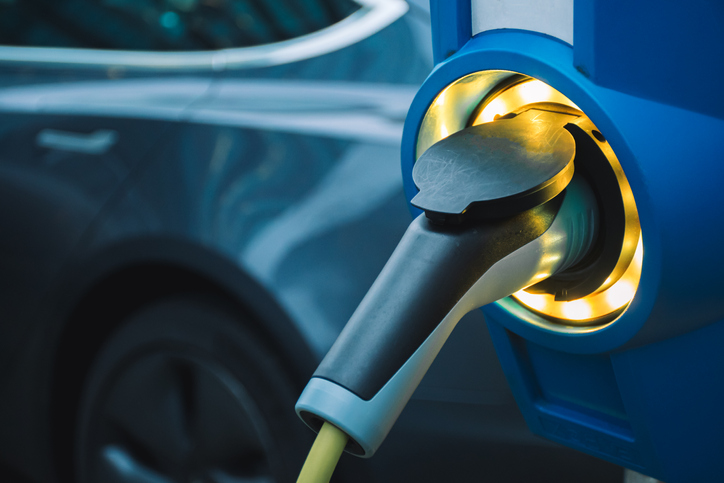Four Ways Traditional Vehicles Could Transform in the Future—Even Elevators
Researchers, professors and executives forecast changes and innovations coming for some traditional conveyances
As transportation industries look to reduce carbon emissions and keep up with changing regulations, the vehicles and vessels that carry people and products will evolve in the coming decades. Here are four trends experts in their fields see coming.
Elevators That Turn Left
Despite their name, there’s no rule that says elevators can only go up and down. Lee Gray, a professor of architectural history at the University of North Carolina at Charlotte, says elevators that also move horizontally have been part of the vertical transportation dream for more than 100 years. It hasn’t become a reality, he says, largely because of the immense costs associated with it.
But companies are moving in this direction. The German company TK Elevator, for example, has designed an elevator that moves vertically and horizontally called Multi—though it hasn’t yet been put into public operation. Dr. Gray believes multidirectional elevators will be a part of the future, deployed in a variety of ways.
If more people live in urban high-rises, multidirectional elevators could be incorporated into tall buildings and integrated with large transportation systems, such as subways, built beneath them, says Dr. Gray. They could also be used in cities like Las Vegas, where a lot of people in, say, a hotel are trying to get to a convention center across the street.
Climate change could inspire the use of multidirectional elevators to help people avoid the heat, much like cities such as Minneapolis currently have heated skyways to help people avoid the cold, Dr. Gray says. “Maybe I really don’t want to go outside,” he says. “Maybe I’ll be happy to be zooming along in my little air-conditioned elevator car.”
Truly Remote Car Charging
Charging an electric car is a lot like charging a cellphone in the 2000s: If you use it at all, you’ve got to charge it a lot. Solutions in the works include dedicated lanes that wirelessly charge cars as they drive down the road, with a pilot program launching next year in Detroit.
Dedicated lanes aren’t the best long-term solution, says Dennis Hong, a professor of mechanical and aerospace engineering and founding director of the Robotics & Mechanisms Laboratory at University of California, Los Angeles. “We want to try to avoid rigid infrastructure, things that you can’t really modify that easily,” he says.
Dr. Hong says an alternative could be car charging delivered via radio waves. The technology exists, he says, but is being used only in laboratory settings, not commercially.
Such a method would need to overcome some significant safety challenges, notes Michael Kintner-Meyer, a research engineer at the Pacific Northwest National Laboratory in Washington state. Sending that amount of energy through radio waves would be similar to pointing a radar at a car, he says, except “any living creature passing through it will be basically fried.”
Tugboat Drones
Even tugboats are being challenged to go emissions-free. These traditional helper-vessels could also go people-free, some in the industry believe.
Having crews on board comes with inefficiencies: People need bathrooms, beds, clean laundry, and they have a lot of downtime. Companies are developing technology for electric tugboats to sail without crew onboard—running autonomously when appropriate and controlled remotely by a human as needed.
Between going electric and not needing a crew, the look of a tug is going to change. Since it will no longer need a place for the crew to sleep and a high perch for the captain, the tugs of the future could be smaller and flatter. “What I envision looking at the harbor one day is you’re going to see more vessels with a very low profile,” said Jerry Silla, director of fleet engineering at Foss Maritime, a Seattle-based tug operator. “You won’t see these big superstructures, you’re not going to see vessels that are manned by crew.”
One of the biggest challenges for a crew-free tugboat? Figuring out how to transfer the tow rope from the tug to the vessel it is assisting, says Oskar Levander, senior vice president of business concepts at Norway’s Kongsberg Maritime. Today, crew members on the ship and the tug exchange a rope. But what to do when no one’s on the tug? Mr. Levander says potential solutions include big mechanical arms that come off the side of the tug, magnets, and even drone-delivered rope.
The Little, Local Airport
The U.S. has roughly 5,000 public airports, heliports, and seaplane bases, and upward of 14,000 for private use. But most travelers fly between only a few of the big ones. That is going to change, predicts Gregory Davis, CEO of Eviation, which is developing an electric plane.
Mr. Davis contends that electric planes will be cheaper to operate than those powered by jet fuel. They’re also going to be smaller. His company’s Alice prototype—which made its first flight in September—holds nine passengers and two crew members. The emergence of electric planes will eventually open up the nation’s regional and local airports to more commercial flights, he predicts, allowing travelers to avoid larger airports.
“We have a major potential to expand point-to-point air travel, which is also the most cost-effective and cleanest way of getting specifically from where you [are] to where you want to go,” he said. “You’re going to have much more choice and much easier access to air travel in 2050.”
Eviation plans to begin delivering aircraft in 2027. But before electric airplanes begin carrying commercial passengers between regional airports, there’s work to be done beyond the design of the planes, Mr. Davis says—from dealing with regulatory hurdles to building out a charging network at airports.
 Copyright 2020, Dow Jones & Company, Inc. All Rights Reserved Worldwide. LEARN MORE
Copyright 2020, Dow Jones & Company, Inc. All Rights Reserved Worldwide. LEARN MORE
This stylish family home combines a classic palette and finishes with a flexible floorplan
Just 55 minutes from Sydney, make this your creative getaway located in the majestic Hawkesbury region.
As Paris makes its final preparations for the Olympic games, its residents are busy with their own—packing their suitcases, confirming their reservations, and getting out of town.
Worried about the hordes of crowds and overall chaos the Olympics could bring, Parisians are fleeing the city in droves and inundating resort cities around the country. Hotels and holiday rentals in some of France’s most popular vacation destinations—from the French Riviera in the south to the beaches of Normandy in the north—say they are expecting massive crowds this year in advance of the Olympics. The games will run from July 26-Aug. 1.
“It’s already a major holiday season for us, and beyond that, we have the Olympics,” says Stéphane Personeni, general manager of the Lily of the Valley hotel in Saint Tropez. “People began booking early this year.”
Personeni’s hotel typically has no issues filling its rooms each summer—by May of each year, the luxury hotel typically finds itself completely booked out for the months of July and August. But this year, the 53-room hotel began filling up for summer reservations in February.
“We told our regular guests that everything—hotels, apartments, villas—are going to be hard to find this summer,” Personeni says. His neighbours around Saint Tropez say they’re similarly booked up.
As of March, the online marketplace Gens de Confiance (“Trusted People”), saw a 50% increase in reservations from Parisians seeking vacation rentals outside the capital during the Olympics.
Already, August is a popular vacation time for the French. With a minimum of five weeks of vacation mandated by law, many decide to take the entire month off, renting out villas in beachside destinations for longer periods.
But beyond the typical August travel, the Olympics are having a real impact, says Bertille Marchal, a spokesperson for Gens de Confiance.
“We’ve seen nearly three times more reservations for the dates of the Olympics than the following two weeks,” Marchal says. “The increase is definitely linked to the Olympic Games.”

Getty Images
According to the site, the most sought-out vacation destinations are Morbihan and Loire-Atlantique, a seaside region in the northwest; le Var, a coastal area within the southeast of France along the Côte d’Azur; and the island of Corsica in the Mediterranean.
Meanwhile, the Olympics haven’t necessarily been a boon to foreign tourism in the country. Many tourists who might have otherwise come to France are avoiding it this year in favour of other European capitals. In Paris, demand for stays at high-end hotels has collapsed, with bookings down 50% in July compared to last year, according to UMIH Prestige, which represents hotels charging at least €800 ($865) a night for rooms.
Earlier this year, high-end restaurants and concierges said the Olympics might even be an opportunity to score a hard-get-seat at the city’s fine dining.
In the Occitanie region in southwest France, the overall number of reservations this summer hasn’t changed much from last year, says Vincent Gare, president of the regional tourism committee there.
“But looking further at the numbers, we do see an increase in the clientele coming from the Paris region,” Gare told Le Figaro, noting that the increase in reservations has fallen directly on the dates of the Olympic games.
Michel Barré, a retiree living in Paris’s Le Marais neighbourhood, is one of those opting for the beach rather than the opening ceremony. In January, he booked a stay in Normandy for two weeks.
“Even though it’s a major European capital, Paris is still a small city—it’s a massive effort to host all of these events,” Barré says. “The Olympics are going to be a mess.”
More than anything, he just wants some calm after an event-filled summer in Paris, which just before the Olympics experienced the drama of a snap election called by Macron.
“It’s been a hectic summer here,” he says.

AFP via Getty Images
Parisians—Barré included—feel that the city, by over-catering to its tourists, is driving out many residents.
Parts of the Seine—usually one of the most popular summertime hangout spots —have been closed off for weeks as the city installs bleachers and Olympics signage. In certain neighbourhoods, residents will need to scan a QR code with police to access their own apartments. And from the Olympics to Sept. 8, Paris is nearly doubling the price of transit tickets from €2.15 to €4 per ride.
The city’s clear willingness to capitalise on its tourists has motivated some residents to do the same. In March, the number of active Airbnb listings in Paris reached an all-time high as hosts rushed to list their apartments. Listings grew 40% from the same time last year, according to the company.
With their regular clients taking off, Parisian restaurants and merchants are complaining that business is down.
“Are there any Parisians left in Paris?” Alaine Fontaine, president of the restaurant industry association, told the radio station Franceinfo on Sunday. “For the last three weeks, there haven’t been any here.”
Still, for all the talk of those leaving, there are plenty who have decided to stick around.
Jay Swanson, an American expat and YouTuber, can’t imagine leaving during the Olympics—he secured his tickets to see ping pong and volleyball last year. He’s also less concerned about the crowds and road closures than others, having just put together a series of videos explaining how to navigate Paris during the games.
“It’s been 100 years since the Games came to Paris; when else will we get a chance to host the world like this?” Swanson says. “So many Parisians are leaving and tourism is down, so not only will it be quiet but the only people left will be here for a party.”
This stylish family home combines a classic palette and finishes with a flexible floorplan
Just 55 minutes from Sydney, make this your creative getaway located in the majestic Hawkesbury region.






















